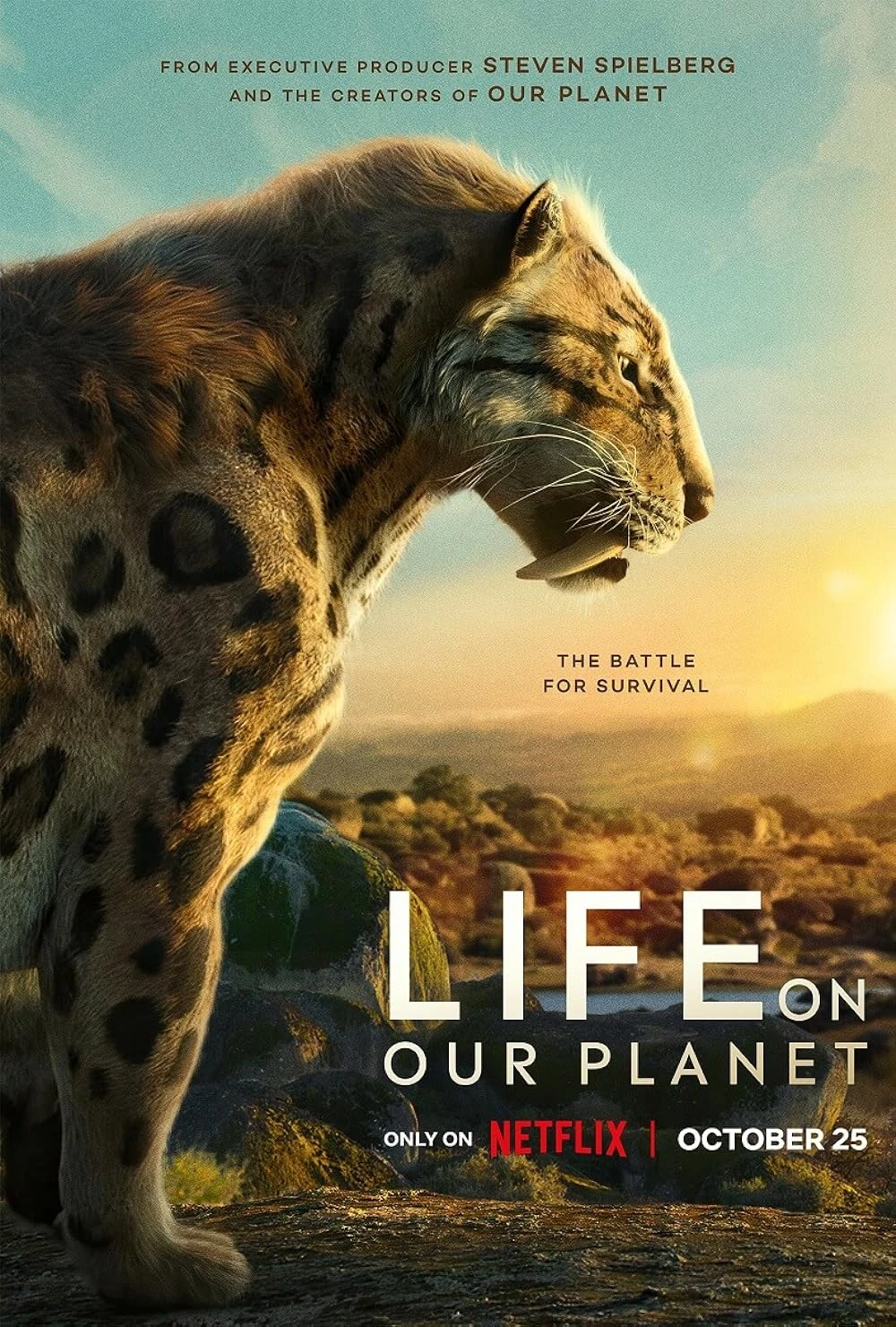In the vast landscape of Netflix documentaries, “Life on Our Planet” has emerged as a groundbreaking work of art and science. The series, narrated by the iconic Morgan Freeman, takes viewers on an enthralling journey through Earth’s history, illuminating the incredible story of evolution. Recently, the masterminds behind the show gathered to unveil the intricacies of its creation. During the presentation, key questions were addressed, shedding light on the meticulous craftsmanship and scientific precision that brought this monumental series to life.
Netflix’s gripping documentary series, ‘Life on Our Planet,’ offers viewers a mesmerizing journey through Earth’s four-billion-year history, a story largely untold in the way that the creators have in this series. With cutting-edge science and technology, the series vividly resurrects long-extinct species, shedding light on the epic struggle for survival that has shaped our planet. This eight-part production executively produced by Steven Spilberg, delves into the five mass extinction events that have left their indelible mark on Earth’s ecosystem, while also confronting the present-day environmental crisis, often noted as the ‘sixth extinction.’ Narrated by the the one and only Morgan Freeman, ‘Life on Our Planet’ takes audiences on a captivating voyage from the dawn of life itself, through the emergence of terrestrial creatures, to the catastrophic downfall of the dinosaurs and the rise of humanity. Through breathtaking visuals and animation, the series underscores the crucial role of humans as stewards of the planet, urging us to address the environmental challenges we face today to ensure a sustainable future.
Life on Our Planet” serves as a poignant call to action for audiences worldwide. The series aims to not only inform but also inspire viewers to take an active role in safeguarding our planet. It unfolds Earth’s remarkable history, from the dawn of life to the intricate ecosystems of today, while emphasizing the urgent need to address the environmental challenges of our time. The presentation shed light on how the series meticulously blended cinematic artistry with scientific authenticity.
Upon entering the theater for the “Life on Our Planet” presentation, it was an exciting and anticipatory atmosphere considering it was inside the famous Amblin Theatre located on the Universal Studios Lot. The audience settled into their seats as the panel of experts, including Dr. Tom Fletcher, Justin Falvey, Johnathan Privette, Keith Scholey, Alastair Forthergrill and Dan Tapster took the stage. Their presence added a significant and prestigious element to the event, and it was clear that something remarkable was about to happen. The Q&A session allowed these experts to provide insights into the making of the series, making the audience feel fortunate to be part of this unique experience.
During the event, the Q&A session came to life with engaging discussions and in-depth answers from the experts. The clips from the Netflix show, “Life on Our Planet,” were seamlessly integrated, providing a visual feast that showcased the stunning and realistic recreations of prehistoric creatures. The audience was captivated by the insightful explanations and the intricate process behind the series’ creation. The Amblin Theatre became a hub of knowledge and inspiration, where attendees not only learned about the show but we’re also moved by the urgent message of environmental conservation shared by the panelists. The clips and discussions left a lasting impression, reinforcing the significance of understanding our planet’s history to secure its future. Considering this series will have such an anticpating ending, I decided to ask a question that would answer viewers’ main question after finishing this series.
Question:
Hello. Considering that a lot of documentaries, as you said, don’t have many cliffhangers, and the series took kind of while to make, this is gonna make viewers binge-watch and want another season. When can viewers expect another season when it took so long for the first one?
DAN: [laugh]
KEITH: Oh, we’d have to hand that over to the legal team.
EVERYONE: [laugh]
FEMALE: We’re very thrilled with this series.
EVERYONE: [laugh]
ALASTAIR: You put her on the spot now. [laugh] I’ll tell you tomorrow, though. [laugh]
KEITH: We learned some efficiencies along the way when it came to shooting VFX. There was a long period of R and D just to figure out how we were gonna pull it off. And so, I think if there ever was to be a follow-up, it wouldn’t take us as long.
ALASTAIR: I think we also feel we’ve hit a new [seat?]. You know, in tele world, actually really new ways of doing things, new ideas, new seams are hard to find. And we think with this series, we’ve hit a new seam. It’s got this, sort of this driving narrative that goes through a natural history series, which we worked [indiscernible] a long time. Driving narrative is hard in normal [indiscernible], but this one, it’s just natural and it goes through like a roller coaster. And there’s so many fantastic stories about our past world which we think we can bring to the screen in this way. So, we’re reallyexcited about this series, but also the place it could take us to.
“Life on Our Planet” is a testament to the incredible results that can be achieved through a fusion of scientific accuracy and artistic craftsmanship. The presentation offered invaluable insights into the passion, dedication, and meticulous planning that brought this insightful documentary to life. With educational initiatives in the pipeline, the series promises to not only entertain but also inspire future generations to become staunch advocates for our natural world. As the legacy of “Life on Our Planet” continues to grow, it marks a turning point in the realm of nature documentaries, elevating the genre to new heights of excellence.

